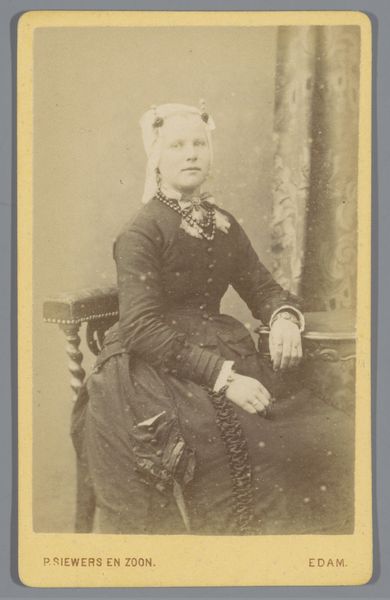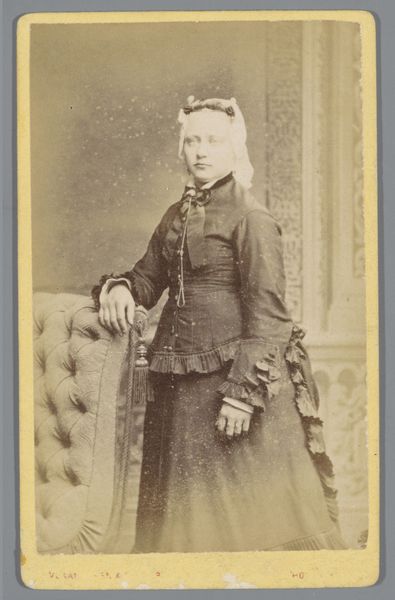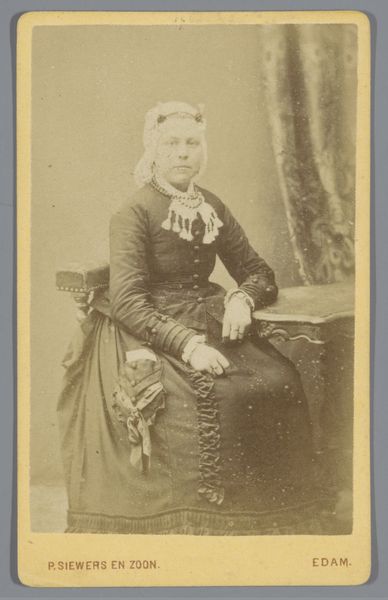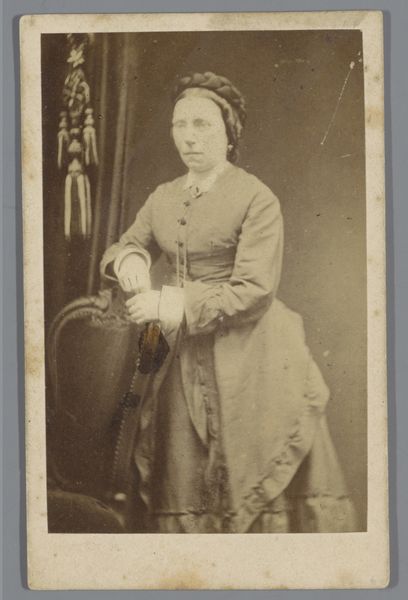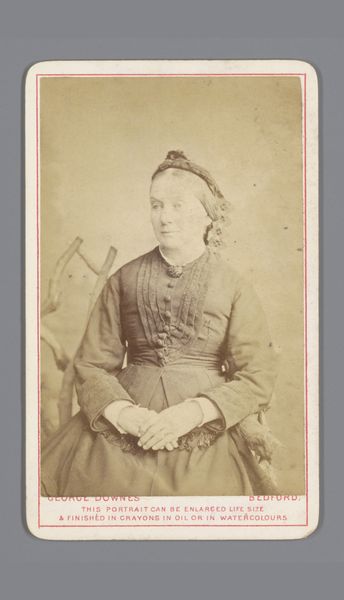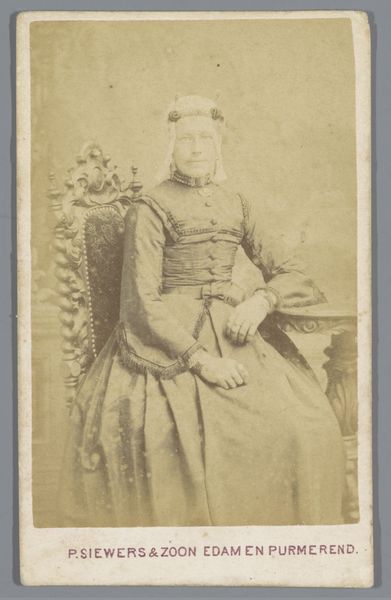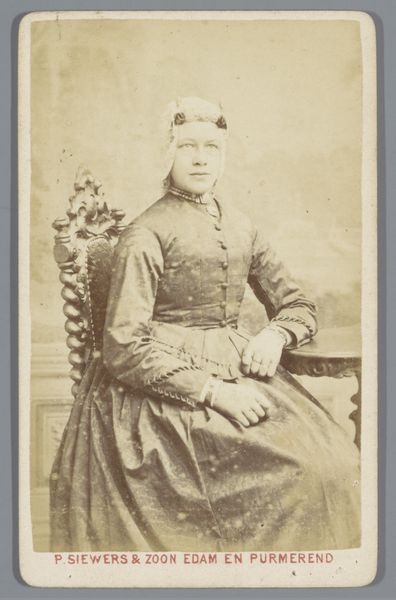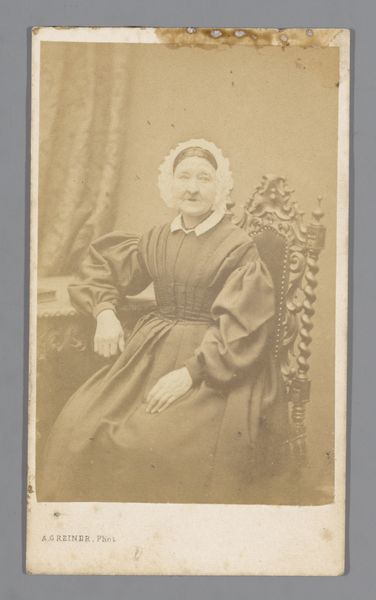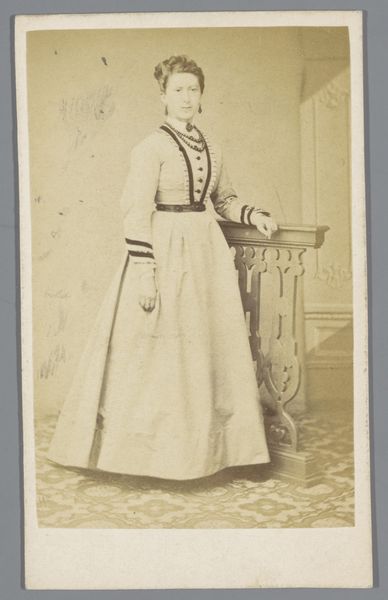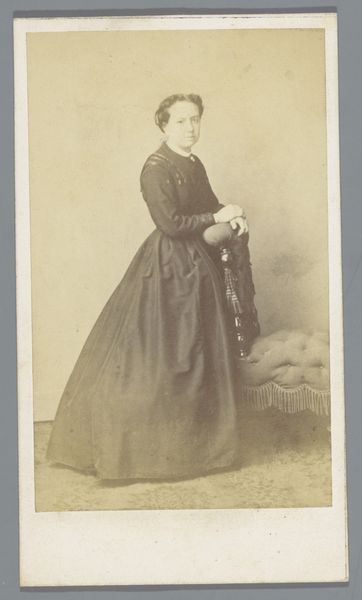
photography
#
portrait
#
photography
#
historical fashion
Dimensions: length 101 mm, width 62 mm
Copyright: Rijks Museum: Open Domain
Editor: Here we have an albumen print, "Portrait of an Unknown Woman with a Bonnet, Seated at a Table," made sometime between 1857 and 1898 by P. Siewers & Zoon. The woman's gaze is very direct and her posture dignified. What catches your eye? How do you interpret the visual language? Curator: The detail embedded in this image reveals so much about cultural memory. The bonnet, the ornate chair, even the backdrop… They aren't just aesthetic choices, but loaded signifiers of status, respectability, perhaps even regional identity within the Netherlands at the time. Think about the textures conveyed—the crispness of the bonnet juxtaposed with the soft drape of her dress. Do you see a symbolic narrative emerging from these contrasting elements? Editor: Yes, I do. It's interesting how the starkness of the image brings out those textures. It gives a sense of who she was in her time, though we will never know her name or station in life. I would have expected such a setting to impart a warmer tone to her portrait, but I almost feel like she is guarding herself here. Curator: Perhaps she's self-aware of the performative nature of portraiture itself? Consider the necklace and pendant; likely a cherished, symbolic item passed down, an emblem of family history. This is where the emotional and cultural weights intersect. How does knowing this potential connection affect your reading of her "guarded" expression? Editor: I now see the portrait less as reserved and more as dignified. There's a sense of carrying history, tradition, and personal significance with grace. That pendant makes me see how a single piece of jewelry speaks volumes! Curator: Precisely. And through her, across the chasm of time, we gain a sliver of access to an era’s values, its burdens, and its beauty, manifested in a single, powerful image.
Comments
No comments
Be the first to comment and join the conversation on the ultimate creative platform.

